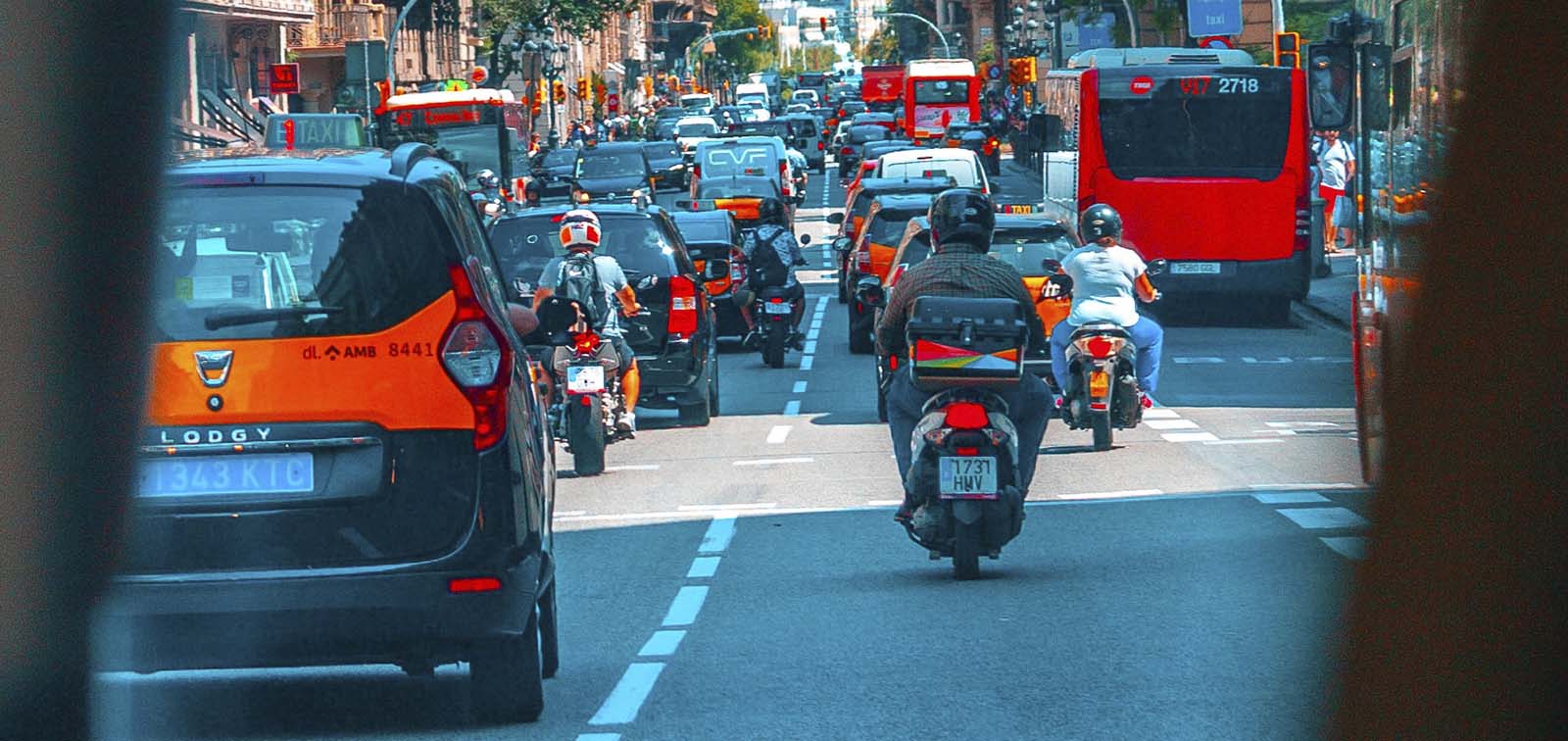New World Health Organisation (WHO) Air Quality Guidelines Endorsed by Over 100 Scientific Societies
ISGlobal is signatory to the joint statement issued by the International Society for Environmental Epidemiology (ISEE) and the European Respiratory Society (ERS) urging governments everywhere to implement more ambitious clean air policies
22.09.2021
The International Society for Environmental Epidemiology (ISEE) and the European Respiratory Society (ERS) have issued a joint statement, endorsed by more than 100 medical and scientific societies from around the world, to support the new Global Air Quality Guidelines (AQG) published recently by the World Health Organisation (WHO).
As a member of both ISEE and ERS, the Barcelona Institute for Global Health (ISGlobal), a centre supported by the ”la Caixa” Foundation, welcomes this joint statement, which urges governments to use these new guidelines to establish more effective clean air and emission reduction policies.
(1/5)��Today, the @WHO has published the new Global #AirQuality Guidelines.
— ISGlobal (@ISGLOBALorg) September 22, 2021
��The new guidelines are much lower than the previous ones, and based on a much larger body of research than before.#AirPollution #CitiesWeWant #CarFreeDay pic.twitter.com/c9Hrqfx2Hi
The new WHO air quality guidelines, which update those published in 2005, reflect the broad scientific consensus on the major health impact of air pollution, currently the fourth greatest risk factor for disease and mortality worldwide, after high blood pressure, smoking and diet.
Mark Nieuwenhuijsen, president of ISEE and director of ISGlobal’s Urban Planning, Environment and Health Initiative, emphasises that “these guidelines are a wake-up call for policy-makers and for all of us: it’s time to take air pollution seriously”. He goes on to say that “even though these guidelines are not legally binding, we hope that they will influence air quality policies worldwide.” Both Nieuwenhuijsen and Jordi Sunyer, Research Professor at ISGlobal, have been part of the external review group of the new guidelines.
To protect public health, people living with chronic diseases and the environment from the harmful effects of air pollution, “policy makers at all levels must make a serious and urgent commitment to the new guidelines and implement ambitious air quality policies,” says Nieuwenhuijsen.
The focus of Martine Vrijheid, head of ISGlobal’s Childhood and Environment programme, is on the serious impact of air pollution on children’s health: “Children are more sensitive to the effects of pollution because their organs, their brains or their lungs for example, are in a growth phase; our research has shown how poor air quality affects cognitive and physical development.” Vrijheid strongly urges governments to apply the new WHO guidelines: “Pollution is putting the brains of the upcoming generations at a clear disadvantage and improving air quality to protect these children must be an urgent priority”.
New Maximum Values
The WHO now recommends that annual mean PM2.5 concentrations should not exceed 5 µg/m3 (down from the 10 µg/m3 threshold stipulated in 2005) and that annual mean concentrations for nitrogen dioxide (NO2) should not exceed 10 µg/m3, representing a significant reduction from the current 40 µg/m3. In addition, for the first time, reference values for ozone in peak season have been added: a maximum value of 60 µg/m3. The maximum values for PM10 and sulfur dioxide (SO2) are also updated, and carbon monoxide (CO) has been added.
Current European directives stipulate an upper limit of 25 µg/m3 for annual mean PM2,5 and 40 µg/m3 for annual mean NO2. Consequently, experts are now calling for more ambitious policies to bring these limits into line with the new WHO recommendations.
No Safe Level of Air Pollution
The joint statement emphasises that the new WHO guidelines show that no level of air pollution is safe. “It is important to make the point that the scientific evidence indicates that air pollution not only has negative health impacts with exposure to higher concentrations; effects are also observed even with very low concentrations and there are simply no thresholds below which exposure can be considered safe,” explains Nieuwenhuijsen.
The declaration urges policy makers to:
- Revise air quality legislation to reduce the limit values of PM2,5 and NO2, bringing them into line with the new WHO guidelines.
- Combine limit values with legally binding policies to reduce mean pollution levels and achieve a progressive decrease in the exposure of the entire population.
- Invest in, monitor and effectively enforce air quality policies to protect and improve public health and to contribute to the worldwide effort to curb global warming.
“These new WHO guidelines come at a key moment for cities. After the COVID-19 crisis, our world will never be the same again, and neither will our cities. Cities have already started to allocate more space to people and active modes of transport and to push cars out,” says Nieuwenhuijsen. “The severity of the climate crisis—and the upcoming COP26 summit—is also putting pressure on cities to urgently reduce their emissions. Everything is pointing in the same direction: it is time to rethink how our cities work, how to make them more liveable, more healthy and more sustainable.”
More information
- Joint statement by more than 100 medical and scientific societies
- Text written by the Principal Investigators (PI) in air pollution at ISGlobal: Implementing the New WHO Air Quality Guidelines Can Prevent Millions of Premature Deaths and Many More Cases of Disease



